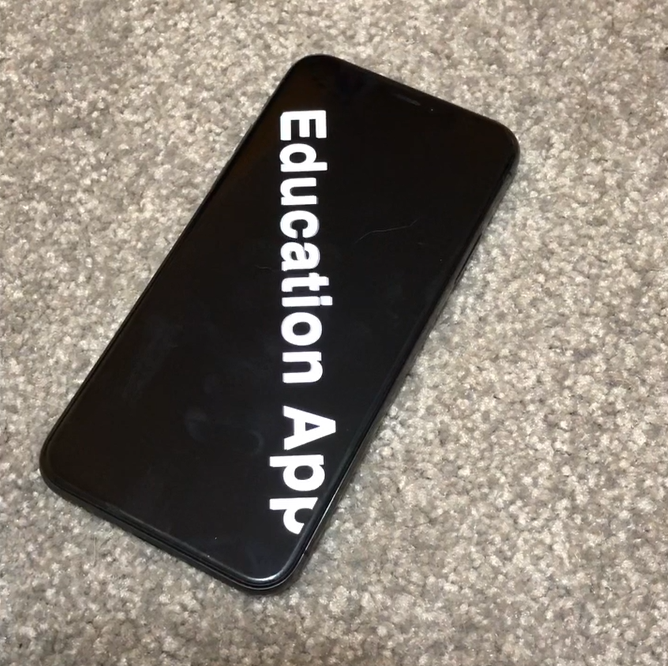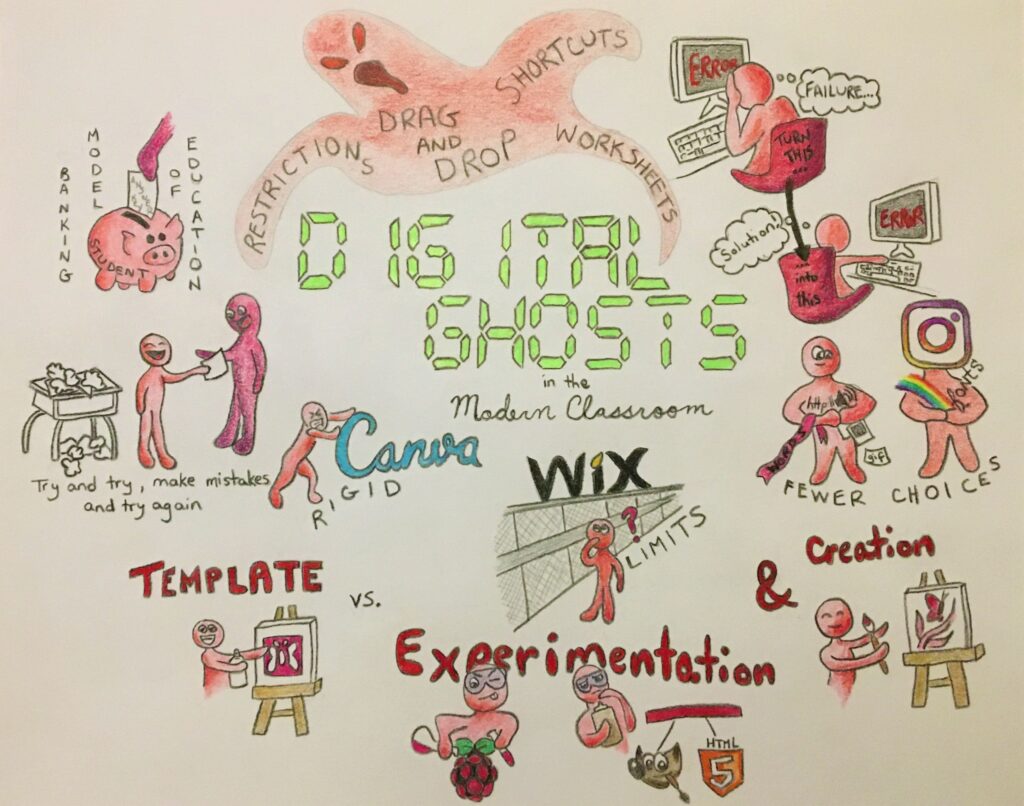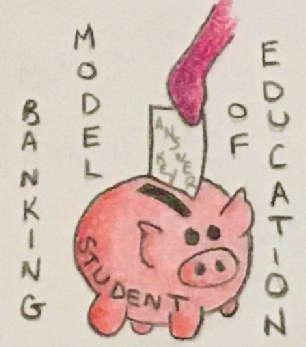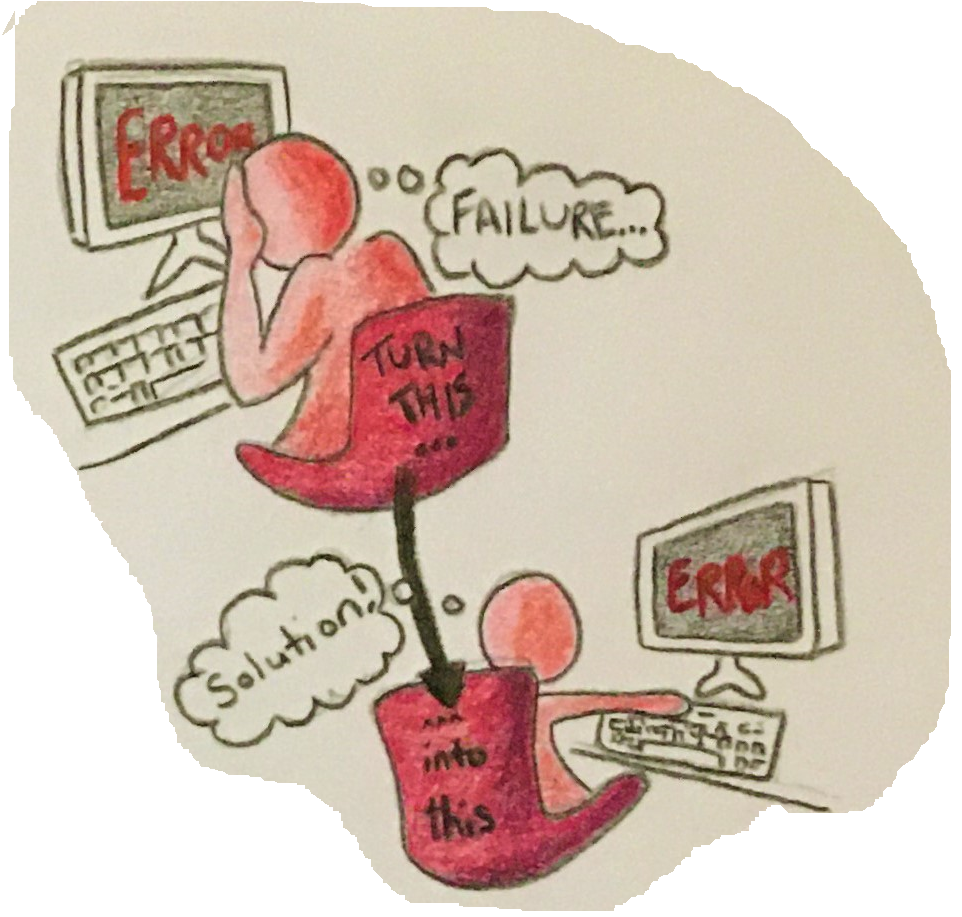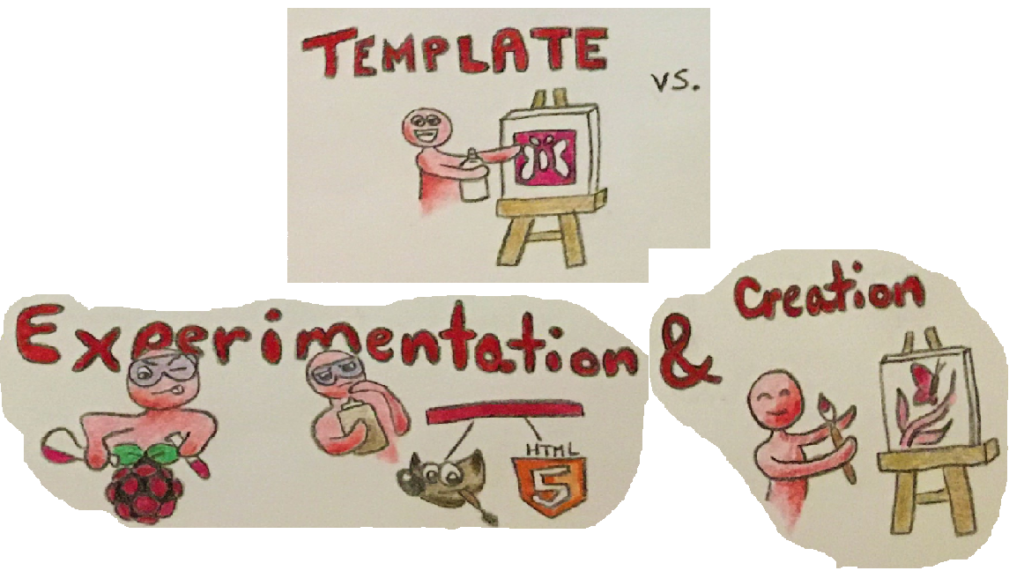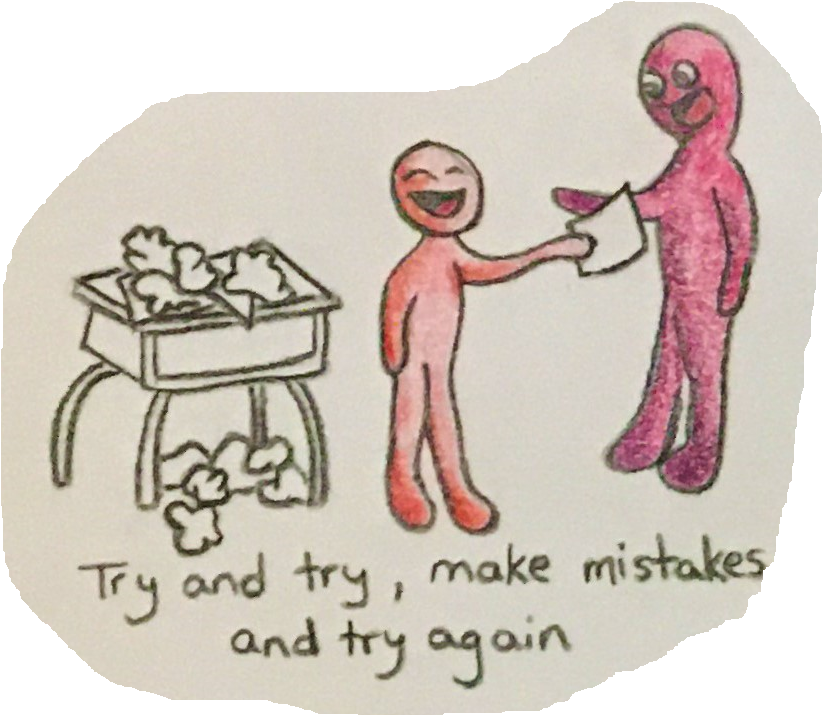Digital tools can be a boon to any classroom, but a teacher shouldn’t just select an app they stumbled upon, give it to their students and expect miracles. There is a lot of work that must be done before and during (and after) the implementation if the tool is going to be of any use.
Ontario Extend’s Technologist Module explains one procedure teachers can use when selecting digital tools to enhance a lesson. I decided a quick video would be an interesting way to summarize the module. It’s also completely different from the sketchnote that I completed last year! Please enjoy.
Interestingly, the module doesn’t start with selecting the technology or with anything to do with implementation, but with several definitions of digital literacy. Some of these definitions were rather wordy, so here’s a boiled down version: a person is digitally literate if they can effectively navigate, communicate and create information using digital platforms. The module explains (and I agree) that a teacher who understands how literate their students are will select an appropriate tool for the benefit of all their students.
As a physics and math teacher, I’ll be entering a field that complements with tech pretty well. However, understanding and interpreting what digital literacy means in regards to students and their abilities must be considered before handing any tech to them. If a student doesn’t have the capability to use it yet, they will gain little from it.
This module goes into great detail while discussing a process called design thinking. It lists five steps an educator should consider when attempting to implement tech into their classroom.
Empathy
The first step is to empathize with your students which (to be honest) is something all teachers should be doing already. Empathy is something outlined in the OCT’s Ethical Standards.
The module suggests building an empathy map to help organize how to students are responding to your current lessons by noting their feelings and reactions while in your classroom. I believe this is a harder activity to complete accurately than it sounds. Some of the pieces of the map might be very difficult for a teacher to decipher on their own. I think I would show students my completed empathy map and allow the students to give their feedback on what they believe is missing to get a more accurate picture.
Define and Ideate
The next two steps in design thinking are to first define what parts of your lessons could be changed or improved with a digital tool and then to decide what features of a tool would be ideal for your classroom. These two steps will use the empathy map (or whatever was used to collect information). The goal is to narrow down what you need and what you want in order to make your search for the tool as efficient and effective as possible.
Something I did not mention in my video is the use of the SECTIONS approach when selecting a digital tool… Four minutes just isn’t a lot of time to discuss something as robust as this technologist module! Luckily, there is an excellent resource by Anthony William Bates that explains everything you could ever want to know about the approach. It narrows down eight elements to consider when selecting a new tool for students to use; all conveniently organized in a delightful acronym.
Prototype
Time to implement the tool! By making a prototype or a test run of the tool for their students to play with, a teacher can observe what the tool enhances and where it may fall flat. By making changes to how the tool is used, these new iterations should become more and more effective, resulting in (hopefully) improved learning. A successful implementation should always be shared with others. Don’t keep your digital creation a secret; I don’t intend to!
Connect
The final element of design thinking was a no-brainer: connect the use of the tool to the curriculum. I found it very strange that this step is at the end. I believe that it would be better placed in between the defining stage and the ideating stage. To put all this time and energy into implementing a tool only to reflect back on its usage and find that it does not help in teaching the curriculum would be very frustrating. So frustrating in fact that I don’t believe any teacher would fall victim to this oversight.
Though I agree with many of the steps outlined in design thinking, I do not agree with the order in which they are presented. As I said earlier, I think it would be foolish to wait until the implementation is nearly done to check if your technology-driven lesson addresses the curriculum properly. This problem shouldn’t even really arise if the define and ideate phases of the implementation were done correctly.
One final note: I believe that having the end goal in mind at the very beginning would be beneficial to the project in the long run. To blindly rush headlong into a problem with no solid aim to work towards seems like it could waste a lot of time and resources. The idea of asking “What do I want the students to be able to do” is absent in design thinking’s protocol. It asks this question of the technology, but not the students and that is a tremendous omission.


